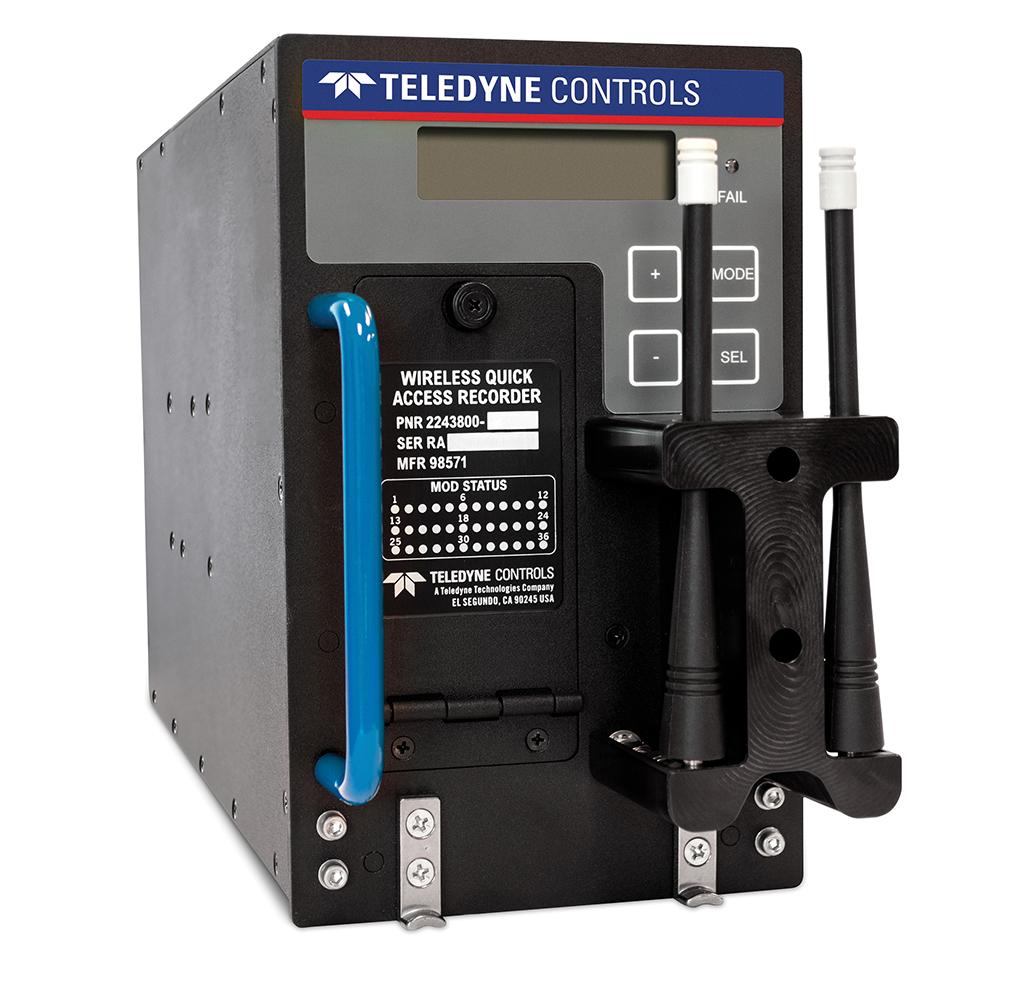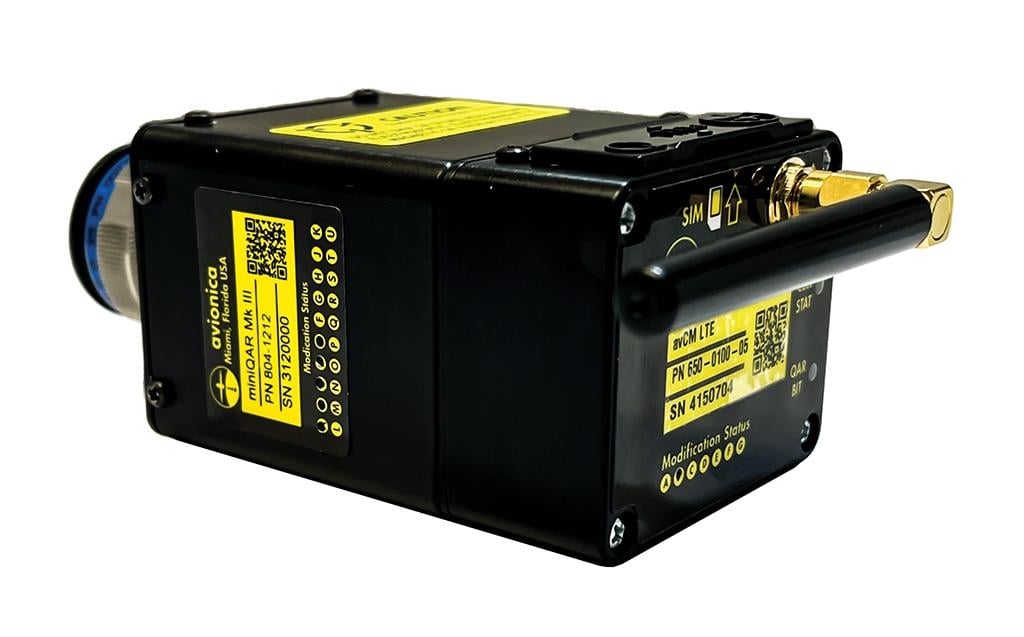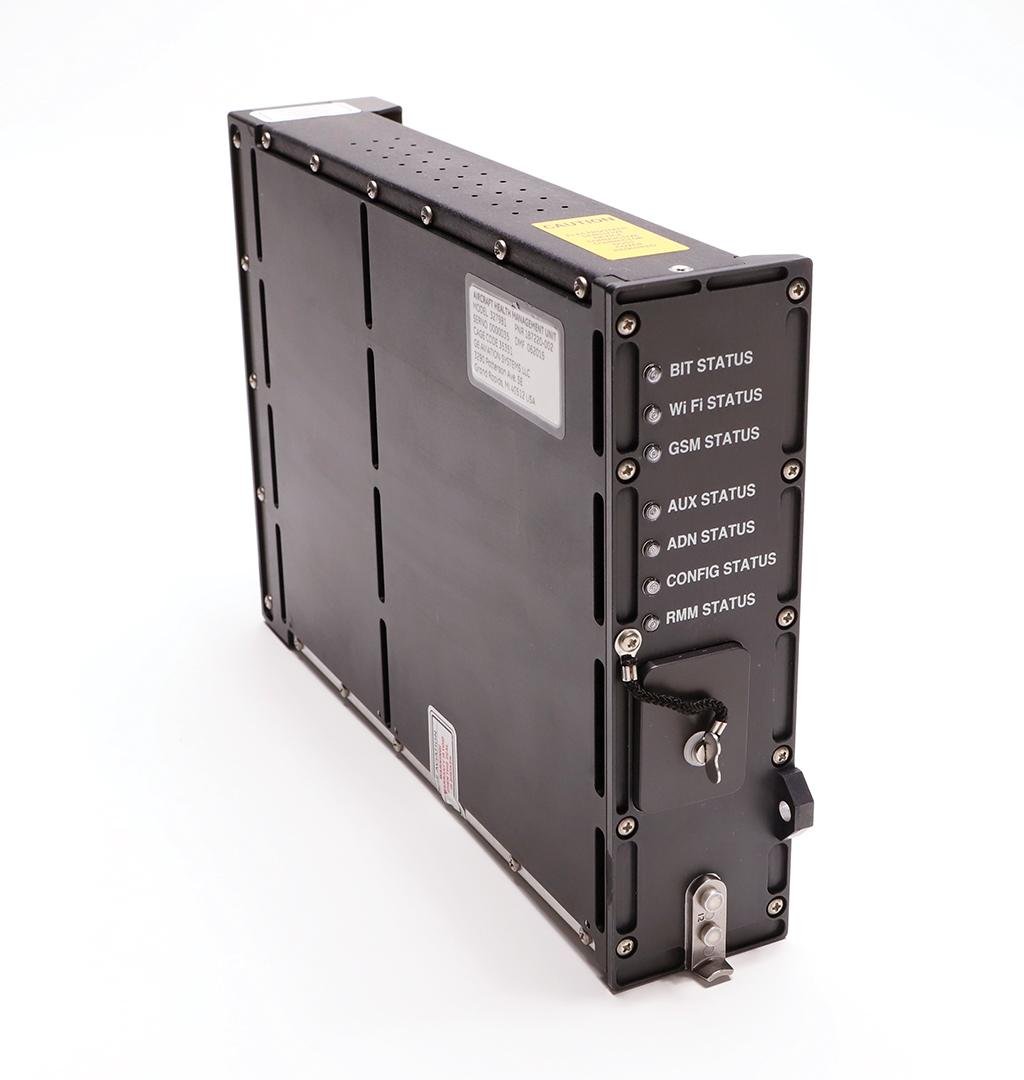
As new-generation aircraft become more digital and data-rich, quick access recorders (QAR) have become increasingly essential for determining system performance and maintenance trends.
A QAR is an onboard airline-configurable data recorder that captures full flight data from multiple systems and data busses—including the engine, explains Matt Wiseman, senior principal engineer of prognostics health management and digital technologies at GE Aviation. Examples of engine data can include “sensed parameters” such as rotor speeds, gas-path temperatures and pressures, lube and fuel system temperature and pressures, and vibration data, he says.
“This data can be used to derive overall performance of the engine, its components and subsystems, which can, in turn, be used to look for signatures or precursors of future failures, or trends to extrapolate for shop visits and predictive workscope planning,” says Wiseman.
According to Kevin Duffner, program director for connected aircraft at GE Aviation, QARs serve as a starting point for predictive maintenance because they provide continuous flight data—which is key for driving analytics. “More-capable aircraft health management systems are becoming increasingly important for their use in predictive maintenance initiatives, as they capture a richer set of information, support bidirectional communications and can be rapidly reconfigured to address emerging needs,” he says.
Duffner adds that over time QARs have evolved in three primary areas: capacity, connectivity and capability. Each generation of aircraft, he notes, produces significantly more data, and QAR capacity has been increased accordingly.
“Connectivity continues to move away from manual data collection to cellular transmissions and, in some cases, taking advantage of satellite and air-to-ground communication methods for real-time data access,” Duffner says. He adds that with respect to capability, QARs tend to be limited to data recording, although more modern equipment can serve as an aircraft interface device, support bidirectional communications and provide a “single pane of glass” to support the maintainer.

Today, established flight-data monitoring programs make flight safety departments the biggest user group of QAR data within the airline community, reports Felix Hammes, predictive maintenance and avionics engineer at Lufthansa Technik in Frankfurt. However, in the last 10 years, the user groups of QAR data have expanded beyond flight safety departments, he says.
“One of those new user groups are fuel-efficiency departments, which are using QAR data to understand and model the influences on fuel consumption in more detail. With that aid, they can provide better recommendations to reduce fuel consumption and track results after implementing changes,” Hammes says. “To do that, it is important to employ more customized QAR data to include information from fuel management systems.” He adds that in the MRO business, considerable effort has been invested to take advantage of QAR data to improve the technical dispatch reliability of airlines and to reduce their maintenance costs.
Scott Ridge, vice president of products and services at QAR supplier Avionica, confirms there are “a few major step functions” of QAR products available today. One provides wireless as well as manual download-only capability, which, he explains, normally meets minimum flight operational quality assurance (FOQA) requirements.
“The next major step up [is a QAR] that offers the ability to gather data from more aircraft systems—manually or wirelessly,” Ridge says. “Finally, there is the ability to host applications and analytics and use the operational data in real time in the cloud.”
Ridge says that Avionica’s flagship product, aviONS—a network server and applications platform—has “all the capability of a basic QAR” in terms of maintenance functionality but can also be used to gather information from additional systems and onboard analytics as well as host additional applications and interface with connectivity systems.
The product is normally installed in the electronic equipment bay, although Avionica offers an option for installation on the cockpit test receptacle on some aircraft models; “aviONS has open architecture and uses Docker containers to allow integration of third-party applications,” Ridge says.
Most basic QARs, according to Ridge, primarily record ARINC 717 data, which is the same data that goes to the flight data recorder. “They may allow one or two channels of ARINC 429 data from a couple of other systems, including aircraft condition monitoring systems,” he says. “Avionica’s family of products [can connect] directly to as many as 429 busses, to get the data from the specific systems that the operator wants for their maintenance operational quality-assurance programs.”

As for how QAR technology is affecting aircraft maintenance, Ridge says it enables the operator to “proactively do maintenance” so delays and cancellations do not occur. “It means minimizing the delay by beginning to troubleshoot the problem while the aircraft is en route, making parts and resources available sooner,” he explains.
Not surprisingly, QAR technology continues to trend in the direction of wireless transmission. The capability dates back 20 years, under a patent for wireless transmission developed by Teledyne Controls, according to Peter Alexander, director of strategic initiatives and alliances. In 1999, Teledyne successfully completed the first airline installation to automate FOQA data wireless downloads after each flight over the (then-state-of-the-art) 2G cellular network, he says.
“Since then, there has been an exponential growth of data requirements from the airlines, and we have evolved with the global cellular communication standards from 2G to 5G,” says Alexander, adding that the use of wireless QAR technology is enabling predictive maintenance and aircraft health monitoring, especially engine management.
“Wireless QAR data transmission can capture faults or trending issues within minutes of aircraft landing, thus reducing overall manpower costs and costly complete engine swaps,” says Alexander. “For example, Pratt & Whitney has partnered with Teledyne in order to provide the data in a timely manner for their EngineWise program, and bring their customers actionable information to prevent unscheduled engine changes along with enhanced optimization.”
Traditionally, QAR technology has been used for post-flight data analysis, says Alexander. However, the evolution of QAR is heading toward real-time operational data transfer, using the QAR to integrate with satcom systems or other internet-protocol-enabled technology, he adds.

“This will significantly change how an airline operates with access to real-time big data and the decision-making in their daily operations and scheduled maintenance—all of which can be optimized to drive down and avoid costs,” he says.
Part of that relates to predictive maintenance. Alexander reports that key North American customers already have predictive maintenance teams that are using Teledyne’s GroundLink Comm+ wireless QAR technology to deliver data to populate their internal system and predictive algorithms.
“Data analysts have the ability to easily expand the data frame on the Teledyne Comm+ QAR to include additional parameters of interest,” says Alexander. “Since our technology is agnostic of the OEMs, we fully support the airlines’ data sovereignty requirements and their own internal predictive maintenance programs.”
Going forward, Alexander sees tighter integration with Satcom systems. As he explains, “black-box-in-the-cloud” systems will become mandated, whereby QAR data will need to be sent in real time to the ground regardless of flight phase.
That will impose a broader adoption of 5G compatibility by the airlines. “The aviation industry is currently facing the challenge imposed by discontinuation of 2G and 3G mobile phone networks in many parts of the world, with more following within the next few years,” cautions Lufthansa Technik’s Hammes. “Wireless data transmission of QAR data is mandatory for today’s use cases. This requires airlines to upgrade to at least 4G [long-term-evolution]-capable equipment to assure data transmission,” he says. “For those operators who have not yet started to deal with 2G/3G discontinuation, it could already be a bit late to start modification campaigns, as this is a time-consuming process, especially for large fleets.”





